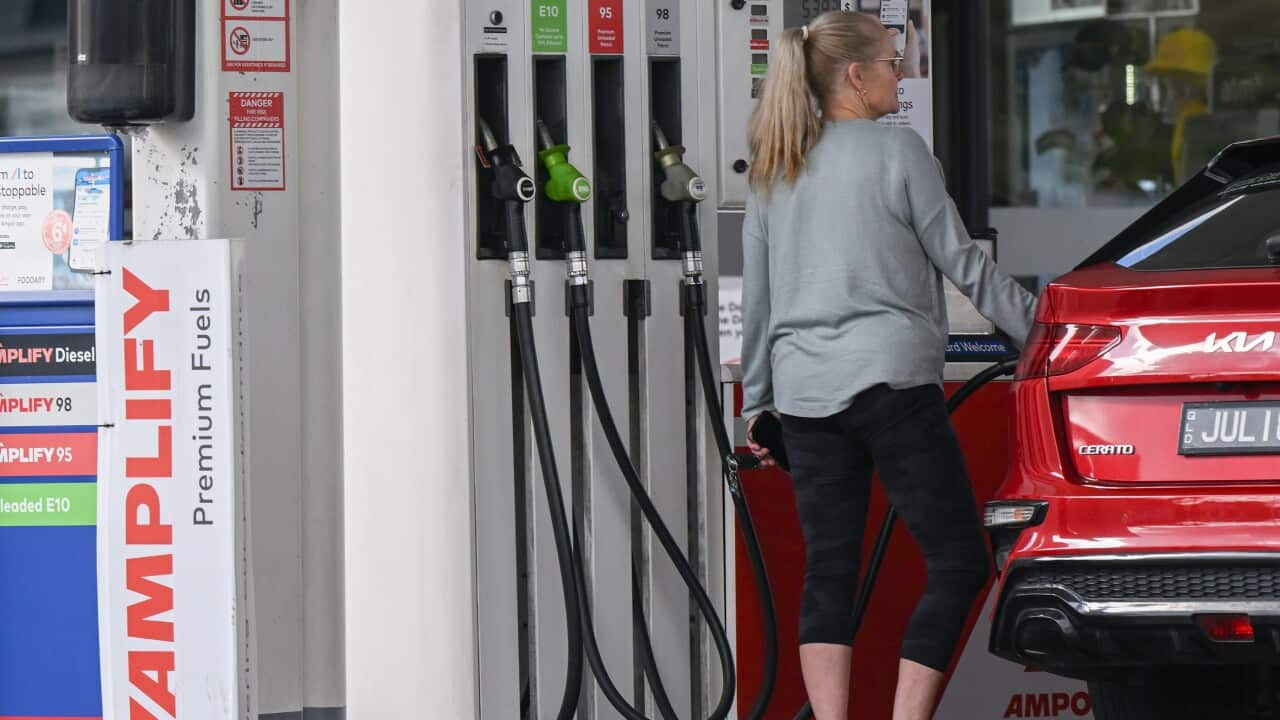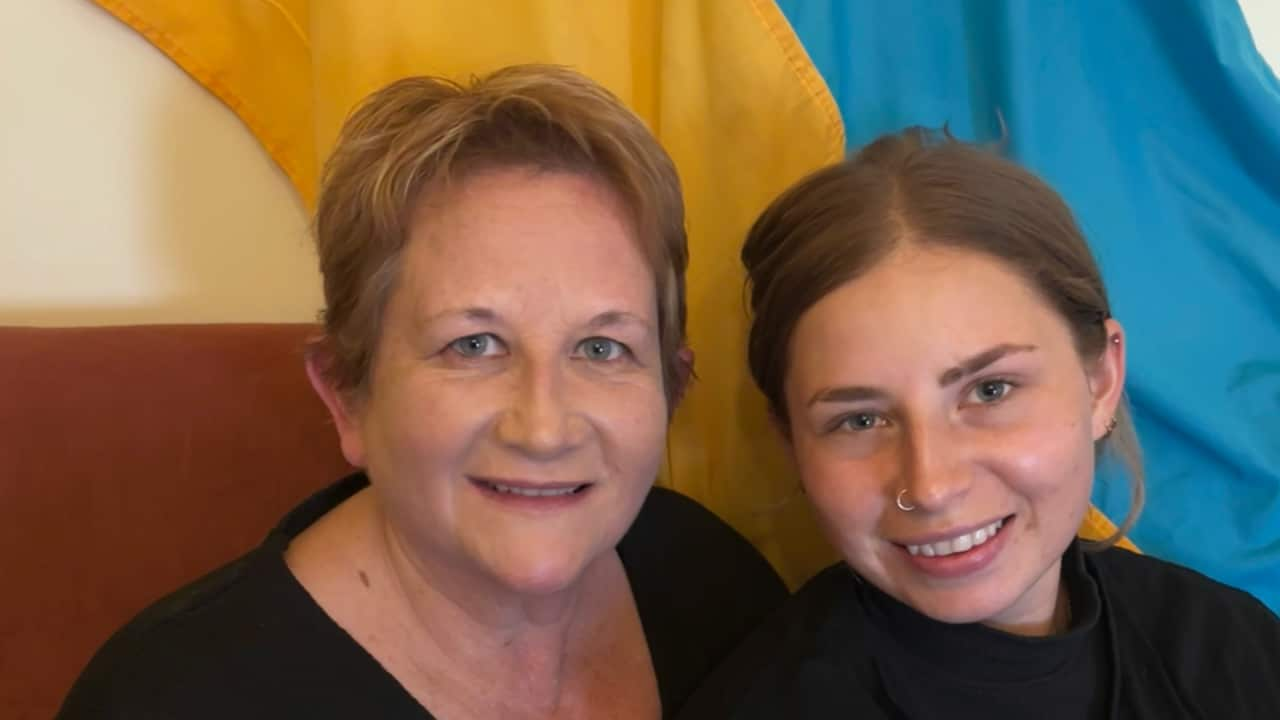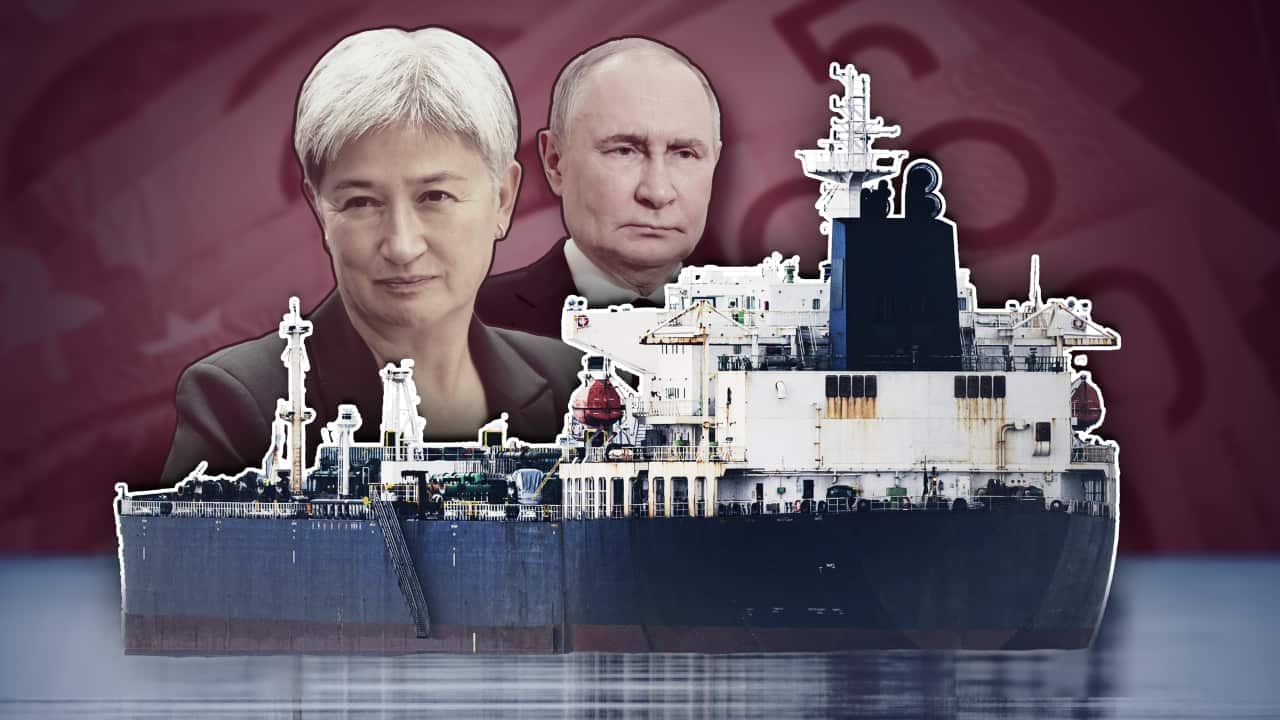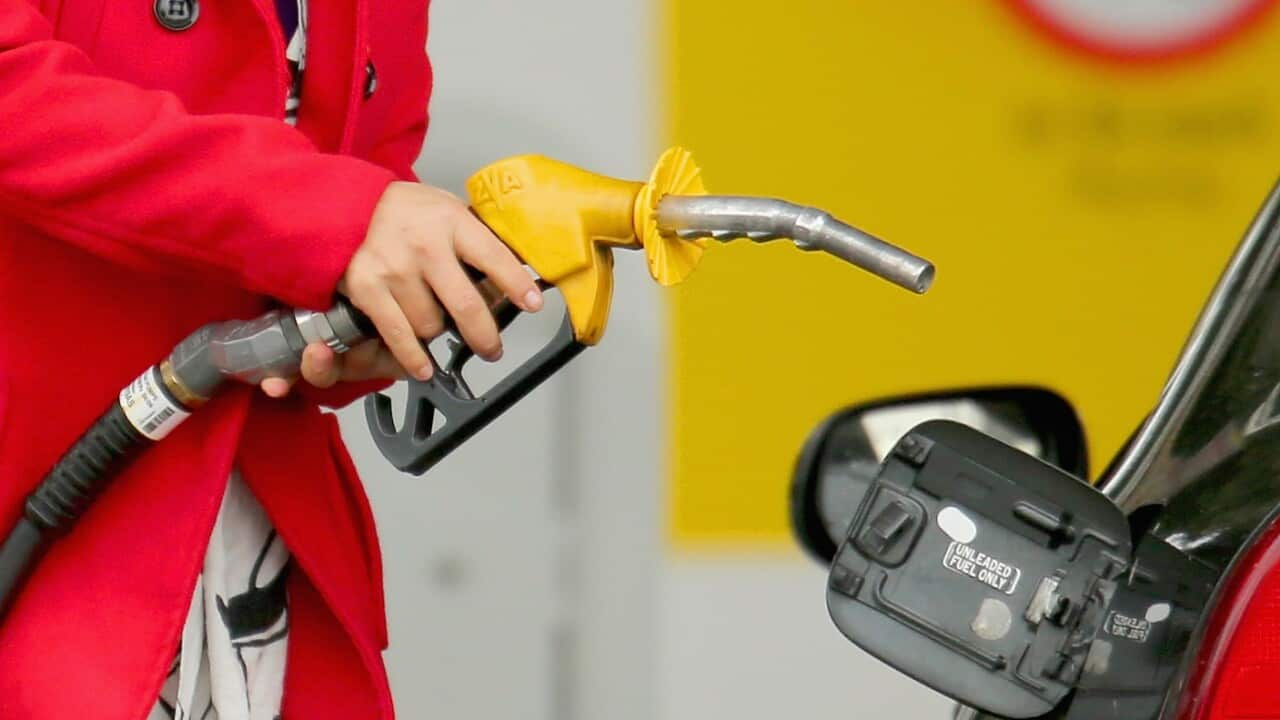Recently-tightened sanctions on Russian oil and strikes on its refineries, alongside attacks on Ukrainian energy sites, could continue to shake global markets, experts say.
Despite diplomatic efforts to forge a ceasefire, Russia's full-scale invasion of Ukraine, launched in 2022, continues. In response, the European Union, United Kingdom and United States have progressively expanded sanctions, tightening controls on Russian transport, insurance and refinery products.
The latest, imposed by the US and EU, aim to further limit Russia's ability to finance its war in Ukraine, which has killed over 14,000 Ukrainian civilians and injured more than 37,000 since February 2022, according to the UN Human Rights Monitoring Mission in Ukraine.
The number of civilian deaths in Russia cannot be independently verified due to limited access and restricted official reporting.
The recent sanctions specifically target Russian oil giants Rosneft and Lukoil, which together account for more than 5 per cent of global oil output.
According to UK government estimates, global sanctions have cost the Russian state at least $687.8 billion since February 2022 — roughly a quarter of Russia's annual GDP.
However, given Russia's position in the global oil market, such measures may also come at a cost to the West.
Although sanctions on Russia are only one factor shaping global oil prices, higher power and transport costs remain key drivers of inflation in Australia, and rising oil prices can amplify both.
Each new round of sanctions influences supply dynamics and trade flows, often in a disruptive way.
Oil market analysts differ on how these measures could ripple through to Australia — some argue the impact will be minimal, while others caution it could be more pronounced. The design and scope of any future Australian sanctions policies may also add another layer of influence.
Ripple effects travel fast
Australia doesn't buy oil directly from Russia, and has imposed sanctions on the import of Russian crude since February 2022.
This year, the Australian government also moved to sanction a fleet of 150 Russian oil tankers — dubbed the 'shadow fleet' — which had been enabling the import of oil products refined from Russian crude to Australia via third countries.
An SBS News investigation last month revealed how these sanctioned tankers are still infiltrating the supply chains of Australian companies.
However, given Russia's position as the world's second-largest oil exporter, sanctions can also affect quick-moving global benchmarks — and those shifts often reach local pumps within weeks.
Tony Sycamore, market analyst at IG Australia, says the new sanctions have already started reshaping trade flows in Asia.
"China's state oil companies have reportedly suspended seaborne purchases of Russian oil, and Indian refiners are reassessing their imports," he says.
"We may now be at a turning point, where higher oil prices could begin to flow through to Australian motorists over the next few weeks."
On 23 October, after the US announced sanctions on major Russian suppliers Rosneft and Lukoil, Brent crude prices jumped about 5 per cent to a two-week high of US$65.99 a barrel, and have since hovered between US$63 and US$65 a barrel.
"Generally, a $1 change in crude translates to about a 1-cent change at the pump," Sycamore says.
In a statement to SBS Russian, the Australian Competition and Consumer Commission (ACCC) confirmed that retail fuel prices are "largely determined by movements in international benchmark refined-fuel prices (which are driven by international crude-oil prices) and the AUD-USD exchange rate".
Changes in these benchmarks, the ACCC added, usually take about two weeks to filter through to major cities, and longer in regional areas.
Oil prices often rise and fall in response to geopolitical flare-ups, and Sycamore says recent events have shown how quickly those swings can reverse.
"Back in June, there were concerns that the 12-day conflict between Israel and Iran would push oil above US$100. It peaked around $78, then dropped again once that conflict ended."
Some observers expect any price increases of recently tightened sanctions to be short-lived.
Speaking with reporters on the sidelines of Singapore International Energy Week, International Energy Agency executive director Fatih Birol said that while sanctions could temporarily lift oil prices, the effect would likely be limited due to surplus capacity.
"The oil and gas markets will enter a very distinct period, which is in the absence of major geopolitical tensions, we are going to see lower oil and gas prices," Birol told Reuters.
Potential impacts on diesel
However, not all shocks fade as fast.
According to the Australian Institute of Petroleum, average retail diesel prices in Australia hit record highs after Russia's full-scale invasion of Ukraine — surging to $2.34 a litre in June 2022, up from lows of around $1.20 in 2020.
Prices have remained elevated since, hovering between $1.80 and $2 a litre through 2023 to 2025.
Diesel powers Australia's trucks, farms and freight — forming the backbone of transport, mining and agriculture.
When its price rises, it pushes up the cost of moving goods, growing food and running equipment, meaning consumers often feel impacts far beyond the pump.
It's also where global oil shocks are most sharply felt in Australia.
With recent sanctions and attacks targeting Russian oil refining infrastructure and continued attacks on Ukrainian energy production sites and distribution facilities — analysts warn that market volatility could intensify.
"The scope for Ukraine to ratchet up its attacks on Russian energy infrastructure, or stricter sanctions on Russian crude exports, could lead to a more significant market disruption and higher prices at the pump," says Saul Kavonic, Head of Energy Research at MST Marquee.
Sanctions models matter
Although Australia's direct exposure to Russian oil is limited, some experts say the new sanctions model could impact supply and push prices slightly higher if it follows the EU's policy of banning imports from countries that are 'net importers' of crude oil.
Vaibhav Raghunandan is an EU-Russia analyst with the Centre for Research on Energy and Clean Air (CREA) and says: "If Australia's policy follows this route, it will probably lead to a rise in prices mainly because it will constrict imports from many 'net importer' countries sourcing Russian crude in Asia — and which supply Australia."
"Our analysis is based on Australia's relatively low reliance on refineries processing Russian crude — around 12 per cent of diesel imports in 2024," he says, adding that the impact of sanctions will depend largely on policy design.
Raghunandan says if Australian sanctions were to focus on refineries in third countries, instead of targeting net importers as the EU has done, that may be a more effective strategy and is likely to have "little to no inflationary effect".
"Even within net importer countries, there remain refineries which do not process Russian crude and supply to Australia," he says.
However, Australia has so far made no announcements signalling an intention to adopt an EU-style ban on imports of products refined from Russian crude via third countries.
How global prices flow to Australian pumps
According to the Australia Institute, about 91 per cent of Australia's fuel consumption is met by imports.
That reliance is compounded by limited domestic storage.
As The Australian Financial Review reported this month, referring to the government data, the country had oil stores equivalent to 49 days' worth of net imports as of July, which is far below the 90-day requirement under the International Energy Agency treaty.
The Department of Climate Change, Energy, the Environment and Water (DCCEEW) reported that in September, Australia held 25 days of jet fuel, 33 days of diesel and 29 days of petrol.
Most of Australia's refined fuel imports come from Singapore, South Korea and Japan, with smaller volumes from India and Malaysia, according to DCCEEW statistics.
As a result, Australian fuel prices are largely driven by the Singapore benchmark — a daily regional price guide published by S&P Global Commodity Insights, also known as Platts.
When oil prices, refinery costs, or shipping rates rise in Singapore, those increases flow directly through to Australian wholesalers and, within about two weeks, to drivers at the pump.
S&P Global's head of oil markets and downstream research Premasish Das says sanctions on Russian oil usually redirect trade rather than reduce it, but notes that rerouting drives up freight and insurance costs.
"The EU sanctions on fuels produced from Russian oil could potentially displace more than 300,000 barrels a day of diesel shipments to the EU from India and Türkiye," he says.
"This shift could fragment the diesel trade and clean-tanker markets, making them more expensive … Given Australia's reliance on imports, this will likely lead to increased fuel prices as well."
Refiners and traders also use similar data from Argus Media to monitor price trends across the region.
Cara Wong, Asia-Pacific associate editor at Argus Media, says those shifts are already visible in Russia's export data.
"We're seeing more damage to Russian refining infrastructure, and loading data is already showing a drop in diesel exports," she says.
"Although Australia doesn't buy directly from Russia, it affects the entire diesel market because it tightens supplies a little bit more … Further restrictions on fuels made from Russian crude would have an outsized impact on Singapore benchmarks."
Disruptions to Russian oil refining
Beyond sanctions, Russia's own refining sector has come under sustained attack.
By late September, up to 38 per cent of refining infrastructure was temporarily offline, according to analysts cited by Reuters and Lenta. Tatiana Mitrova, Global Fellow at Columbia University's Center on Global Energy Policy, told SBS Russian that the cumulative impact of these strikes is proving difficult to reverse.
"Equipment shortages, sanctions on repairs and a new wave of attacks are prolonging Russia's recovery," she says.
"As a result, export volumes are shrinking just as demand rises into the Northern Hemisphere winter."
Analysts say these disruptions add to the broader mix of geopolitical and market pressures already shaping global prices.
Sycamore says that, as well as sanctions on Russia, other global shifts are also feeding volatility; namely, trade tensions affecting global demand for crude oil.
However, recent signs of progress in US–China trade talks have lifted market confidence and pushed the Australian dollar higher against the US dollar, with some analysts predicting it could trade as high as 70 US cents.
A stronger dollar can take some pressure off local fuel prices, Sycamore says.
"And, importantly, OPEC has been increasing production — partly to offset the impact of Russian embargoes, but also to regain market share."
Mitrova adds that the global market has so far proven resilient.
"When the EU restricted imports, it narrowed Russia's export niche, mainly for diesel. But the global oil products market is highly flexible."
She says these measures create logistical difficulties rather than a genuine shortage.
"Finding new buyers, rearranging shipments, and processing transactions under sanctions takes time and money, but the trade continues."
While a similar pattern was seen in 2022 — when sanctions disrupted trade routes and drove up freight and refining costs, pushing Australian fuel prices above $2.30 a litre — this time the market appears more adaptive.
According to the Australian Institute of Petroleum, the national average retail diesel price currently sits around $1.85 a litre.
This story was produced in collaboration with SBS Russian.
Clarification, 5 November: This story has been updated to include various perspectives on the impact of sanctions.
Correction, 18 November: A previous version of this article stated that oil prices rose from US$55 a barrel in September to US$65 a barrel which was incorrect. The article has been updated to reflect the fluctuations in oil prices around the time the recent US sanctions were announced.
Share







